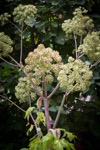Notice (8): Undefined index: geoplugin_countryCode [APP/Controller/AppController.php, line 94]Code Context$Country_code = '';if($ip_data && $ip_data['geoplugin_countryCode'] != null) {$Country_code = $ip_data['geoplugin_countryCode'];$client = null $forward = null $remote = '216.73.216.156' $ip = '216.73.216.156' $ch = unknown $ip_data_in = '{ "geoplugin_status":429, "geoplugin_message": "Blacklisted due to sending too many requests to geoplugin.net. Consider whitelisting your IP or domain", "geoplugin_url": "https://www.geoplugin.com/premium/" } ' $ip_data = [ 'geoplugin_status' => '429', 'geoplugin_message' => 'Blacklisted due to sending too many requests to geoplugin.net. Consider whitelisting your IP or domain', 'geoplugin_url' => 'https://www.geoplugin.com/premium/' ] $Country_code = ''App\Controller\AppController::initialize() - APP/Controller/AppController.php, line 94 App\Controller\ProductsController::initialize() - APP/Controller/ProductsController.php, line 31 Cake\Controller\Controller::__construct() - CORE/src/Controller/Controller.php, line 273 ReflectionClass::newInstance() - [internal], line ?? Cake\Http\ControllerFactory::create() - CORE/src/Http/ControllerFactory.php, line 47 Cake\Http\ActionDispatcher::dispatch() - CORE/src/Http/ActionDispatcher.php, line 91 Cake\Http\BaseApplication::__invoke() - CORE/src/Http/BaseApplication.php, line 235 Cake\Http\Runner::__invoke() - CORE/src/Http/Runner.php, line 65 Cake\Http\Runner::__invoke() - CORE/src/Http/Runner.php, line 65 Cake\Http\Middleware\CsrfProtectionMiddleware::__invoke() - CORE/src/Http/Middleware/CsrfProtectionMiddleware.php, line 108 Cake\Http\Runner::__invoke() - CORE/src/Http/Runner.php, line 65 Cake\Http\Runner::run() - CORE/src/Http/Runner.php, line 51 Cake\Routing\Middleware\RoutingMiddleware::__invoke() - CORE/src/Routing/Middleware/RoutingMiddleware.php, line 168 Cake\Http\Runner::__invoke() - CORE/src/Http/Runner.php, line 65 Cake\Routing\Middleware\AssetMiddleware::__invoke() - CORE/src/Routing/Middleware/AssetMiddleware.php, line 88 Cake\Http\Runner::__invoke() - CORE/src/Http/Runner.php, line 65 Cake\Error\Middleware\ErrorHandlerMiddleware::__invoke() - CORE/src/Error/Middleware/ErrorHandlerMiddleware.php, line 96
| Scientific: | Angelica archangelica |
|---|---|
| Other: | Garden Angelica |
| Family: | Apiaceae |
Garden Angelica is native to the northern regions of Europe. For centuries the plant was used in European medicine to treat digestive disorders. The plant contains bitter compounds and essential oils making it an " aromatic bitter " that increase appetite, relieves cramping pain and fullness, and removes flatulence. Today it remains a common ingredient in “digestif” liquors like BÉnÉdictine, Vermouth & Chartreuse.
Before the advent of antibiotics, doctors used garden angelica to treat infections including the infamous plague. Herbalist still uses it for respiratory infections where its essential oils and other compounds both fight infections and help relax the smooth muscles of the respiratory tract to ease breathing. Furthermore, it may benefit cramping pains and urinary tract infections (UTI).
Respiratory
• upper and lower respiratory tract infections with phlegm that is difficult to expel
• colds
• influenza
• bronchitis
• pneumonia
Gastrointestinal
• digestive complaints
• bloating & gas
• colic
• dyspepsia
Musculoskeletal
• rheumatic conditions
• arthritis
• myalgias
Urinary
• urinary tract infections (UTI)
• urethritis
• Expectorant
• Carminative
• Antispasmodic
• Aromatic Bitter
• Diuretic
• Emmenagogue
• Hypotensive
• Antiinflammatory
• Astringent
• Furanocoumarins
• Volatile Oils
• Phthalides
• Coumarins
• Bitter
• Flavonoids
• Tannins
• Tincture (1:5 in 45% EtOH): 2-5 ml tid
• Liquid extract (1:1 in 25% EtOH): 0.5-2 ml tid
• Decoction (dried root): 1 tsp tid
Contraindications: Pregnancy (uterine stimulant).
Side-effects: Photosensitization (due to furanocoumarins).
• Drug metabolism • furanocoumarins are known to inhibit cytochrome p450s (CYP3A4).
• Anticoagulants • may interact with coumarins
Barnes J, Anderson LA, Phillipson JD. Herbal Medicines, 3rd ed. London: Pharmaceutical Press, 2007.
Bone K. Principles and Practice of Phytotherapy. Edinburgh: Churchill Livingstone, 2000.
Bone K. A Clinical Guide to Blending Liquid Herbs: Herbal Formulations for the Individual Patient. St Louis, MO: Churchill Livingstone, 2003.
Brinker F. The Toxicology of Botanical Medicines, 3rd ed. Sandy, Oregon: Eclectic Medical Publications, 2000.
Felter HW, Lloyd JU. King's American Dispensatory. 1898. http://www.ibiblio.org/herbmed/eclectic/kings/main.html. Accessed: August 19, 2006.
Hoffman D. Medical Herbalism. Rochester, Vermont: Healing Arts Press, 2003.
Weiss RF. Herbal Medicine. Beaconsfield, England: Beaconsfield Publishers Ltd, 1988.
Williamson EM, ed. Major Herbs of Ayurveda. Edinburgh: Churchill Livingstone, 2002
Disclaimer: This content is subject to change. The information is intended to inform and educate; it does not replace the medical evaluation, advice, diagnosis or treatment by a healthcare professional. www.nhpassist.com © 2014 NDAssist Inc. and/or its affiliates. All rights reserved.

|
Garden Angelica
SummaryGarden Angelica is native to the northern regions of Europe. For centuries the plant was used in European medicine to treat digestive disorders. The plant contains bitter compounds and essential oils making it an " aromatic bitter " that increase appetite, relieves cramping pain and fullness, and removes flatulence. Today it remains a common ingredient in “digestif” liquors like BÉnÉdictine, Vermouth & Chartreuse. IndicationsSign in requiredActionsSign in requiredConstituentsSign in requiredPosologySign in requiredSafetySign in requiredInteractionsSign in requiredReferencesSign in required |
|---|